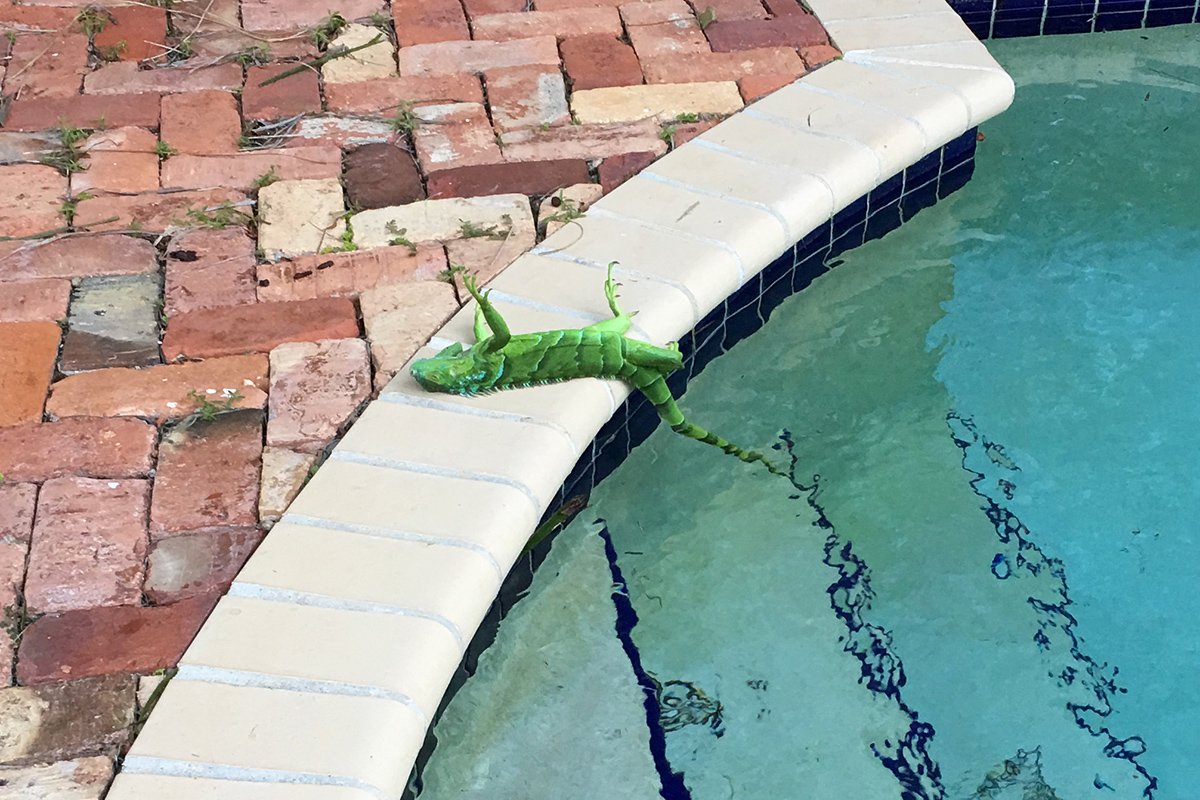Watch for Falling Iguanas! Bomb Cyclone Drops Frozen Lizards

You know what they say: When it rains, it pours — and when it snows in Florida, it hails frozen iguanas.
As a so-called bomb cyclone continues lashing the U.S. East Coast with historic cold temperatures, weird weather abounds. In south Florida, temperatures dipped below 40 degrees Fahrenheit (4 degrees Celsius) on Jan. 3, giving Tallahassee its first measurable snowfall in 28 years. Yesterday (Jan. 4), Floridians reported an even stranger sight: frozen iguana bodies falling out of trees and littering the ground around the suburbs.
Photos posted on social media show the green reptiles lying belly-up and stock-still on lawns, seemingly dead. The good news: Most of them likely aren't dead — they're just really, really cold. [See The World's Most Bizarre Lizards]
"When the temperature goes down, [iguanas] literally shut down, and they can no longer hold on to the trees," Ron Magill, wildlife expert and communications director for Zoo Miami, told The New York Times. "Which is why you get this phenomenon in south Florida that it's raining iguanas." (This isn't even Florida's first iguana rain — a similar event occurred in 2008.)
Iguanas, like other reptiles, are ectotherms (also known as being "cold-blooded"), meaning the temperature outside strongly influences their body temperatures. When the outside temperature drops, preservation of an ectotherm's body temperature becomes the No. 1 priority. Creatures like iguanas and turtles thus conserve energy by slowing their metabolisms and almost entirely stopping moving; this can lead to the sort of self-imposed paralysis (known as torpor) seen in Florida.
"If it's just for a day or two, they'll just get to where they're completely frozen in time. They're still able to breathe. They're still able to do bodily functions, just very slow," Emily Maple, the reptile keeper at the Palm Beach County Zoo in Florida, told CNN affiliate WPEC.
As temperatures warm, the iguanas will thaw and eventually start moving again, Kristen Sommers, who oversees the nonnative fish and wildlife program for the Florida Fish and Wildlife Conservation Commission, told the Associated Press. For this reason, it's recommended that people don't move or touch the critters.
Sign up for the Live Science daily newsletter now
Get the world’s most fascinating discoveries delivered straight to your inbox.
In other ectotherm news, hundreds of sea turtles spotted near the Padre Island National Seashore near Corpus Christi, Texas, suffered a similar cold-paralysis outbreak earlier in the week. National Park Service researchers removed the turtles form the frigid water and placed them in a holding area (with some plastic kiddie pools) to revive.
Originally published on Live Science.

Brandon is the space/physics editor at Live Science. His writing has appeared in The Washington Post, Reader's Digest, CBS.com, the Richard Dawkins Foundation website and other outlets. He holds a bachelor's degree in creative writing from the University of Arizona, with minors in journalism and media arts. He enjoys writing most about space, geoscience and the mysteries of the universe.










